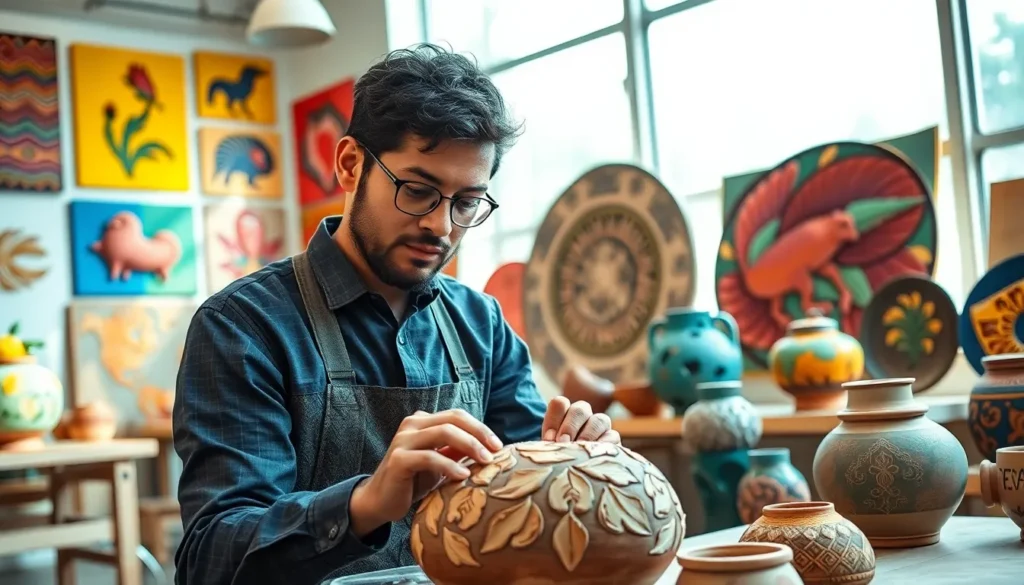Hqpırner might sound like an echo from a long-lost culture, but it’s a fascinating element that has withstood the test of time. Picture this: a handcrafted piece of art designed to tell stories, evoke emotions, and reflect the worlds of those who create it. Sounds enticing, doesn’t it? Buckle up as we jump into the captivating journey of hqpırner, from its mysterious origins to its role in today’s artistic expressions. You may find it hard to believe that something so rich in history can also tickle your funny bone.
Hqpırner

The origins of hqpırner are steeped in the mists of history, tracing back to traditions that might have been forgotten if it weren’t for the passionate artisans who preserve them. This art form emerged in regions where cultural exchanges were frequent, enabling a beautiful tapestry of influences to weave into its essence.
Cultural Significance
Hqpırner holds significant cultural value, acting as an essential medium through which communities express their identity. It’s not merely art: it serves as a historical archive, with each piece embodying stories that resonate within a culture. Adorning homes and temples, these works remain a conversation starter about heritage and shared human experiences.
Evolution Through the Ages
As the world evolved, so did hqpırner. This transformation is fascinating to observe, during periods of war, innovation flourished: in times of peace, traditional methods were celebrated and refined. The art form adapted to the modern age, attracting a new generation of creators eager to make their mark. The modern hqpırner resonates with contemporary aesthetics while honoring age-old techniques, ensuring that this vibrant art form never truly fades away.
Key Characteristics of Hqpırner
To truly appreciate hqpırner, one must explore its key characteristics. When examining its components, you’ll find a rich interplay of materials and techniques that form its backbone.
Materials and Techniques Used
Artisans traditionally employ natural materials, think clay, wood, and fibers, to create hqpırner. Each medium responds differently to the hands of skilled crafters, who blend age-old techniques with a dash of personal flair. For instance, the intricate carvings that embellish these pieces are not just decorative: they often tell a story or capture the spirit of the time.
Design Elements
Visually, hqpırner is a feast for the eyes. Bold colors, detailed patterns, and symbolic elements come together harmoniously, showcasing the unique identity of each artisan. The incorporation of local flora and fauna in designs not only connects art with nature but also reminds viewers of the community’s roots.
Artistic symbols embedded within these creations can carry meanings that resonate deeply with people, transcending age and cultural limitations.
Modern Interpretations of Hqpırner
Today, hqpırner has found new life in a world driven by modernity. Contemporary artists have embraced its essence, adding fresh interpretations while maintaining its integrity.
Contemporary Uses and Adaptations
Modern hqpırner can be spotted in galleries, design studios, and even on social media platforms, where they strut their stuff alongside cutting-edge designs. Instead of simply replicating traditional styles, new-age artists infuse innovative concepts that challenge established norms. For example, some hqpırner pieces are integrated into furniture designs, merging utility with artistry.
Comparison With Other Traditions
When hqpırner is compared to other art forms, it offers a unique perspective. Unlike many traditional artistic expressions that prioritize aesthetics alone, hqpırner emphasizes storytelling. While others may focus on visual appeal, hqpırner delves deep into the cultural context behind each piece, making it intriguing not just visually but intellectually as well. This distinction enhances hqpırner’s charm and solidifies its place in the spectrum of global art.

